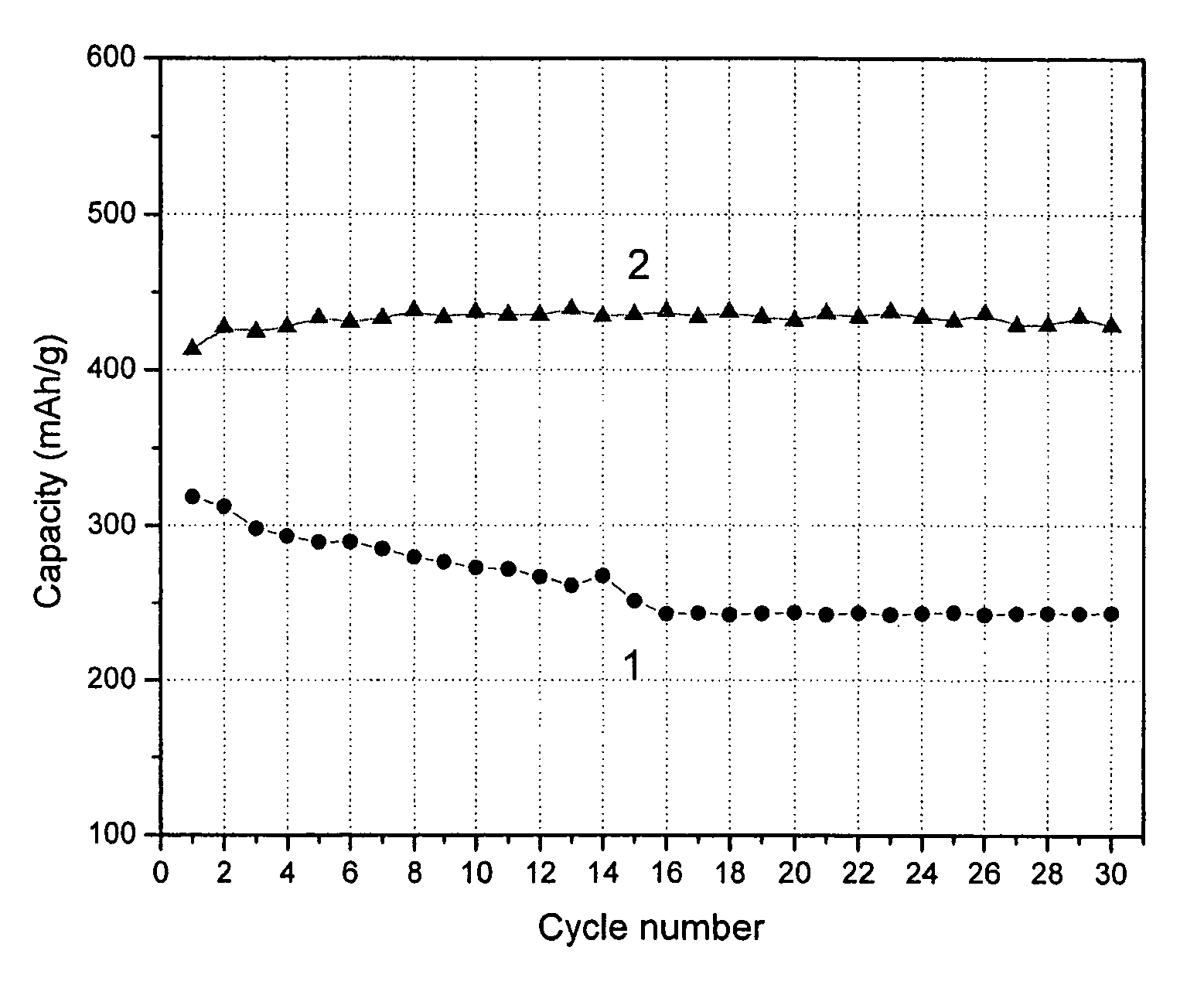Lithium-ion battery incorporating carbon nanostructure materials
a carbon nanostructure, lithium-ion battery technology, applied in nanotechnology, material nanotechnology, non-aqueous electrolyte accumulator electrodes, etc., can solve the problems of high specific capacity, poor cycleability, and serious safety problems
- Summary
- Abstract
- Description
- Claims
- Application Information
AI Technical Summary
Benefits of technology
Problems solved by technology
Method used
Image
Examples
example 1
[0016]Nanocarbons were fabricated using a 3% Si-AFI zeolite template material (Si0.03AlP0.97 with a feedstock recipe of 0.03(SiO2):1(iso-Propanol)3Al:0.97(H3PO4)). 3% Si-AFI zeolite (2 μm×2 μm×0.5 μm) was loaded into a quartz vessel and then placed into a high-temperature reaction chamber. In a pre-heating step, the heating rate was controlled at 1° C. per minute from room temperature to 250° C. with an inert gas flow over the chamber at 400 ml / min. From 250-550° C., the heating rate could be increased to 5° C. per minute. At 550° C., 3% Si-AFI is calcined for 5 hours with a mixed gas of argon 200 ml / min and methane 300 ml / min. The as-obtained nanocarbons@zeolite was post-treated with HCl-washing for 48 hours, vacuum drying at 140° C. and a high-temperature treatment at 900° C. Nanocarbons were observed by HRTEM, and were seen to comprise more than 92% amorphouse nano-particles (about 10 nm) and less than 8% nanotubes.
[0017]In the following example of an embodiment of the invention,...
example 2
[0018]In the figure, sample 1 is a conventional lithium ion battery in which graphite is used as the negative electrode material, while sample 2 is an embodiment of the present invention in which the negative electrode material is a mixture of a nano-carbon material as described above (50% by weight) mixed with graphite (50% by weight). In the measurement, nano-carbon and lithium foil were used as working electrode and counter electrode respectively. Constant current (80 mA / g) cycled charge / discharge was operated between 0.005 to 2.8 V (versus Li / Li+) with PC control in room temperature. The measurement was carried out with a conventional two-electrode coin cell, wherein the working electrode comprises nanocarbon / graphite and the counter electrode was lithium metal. After soaking with an electrolyte, a Celgard polypropylene separator was sandwiched between the two electrodes. The electrolyte was 1 M LiPF6 dissolved in a 50 / 50 (wt %) mixture of ethylene carbonate (EC) and diethyl car...
PUM
| Property | Measurement | Unit |
|---|---|---|
| wt % | aaaaa | aaaaa |
| wt % | aaaaa | aaaaa |
| temperature | aaaaa | aaaaa |
Abstract
Description
Claims
Application Information
 Login to View More
Login to View More - R&D
- Intellectual Property
- Life Sciences
- Materials
- Tech Scout
- Unparalleled Data Quality
- Higher Quality Content
- 60% Fewer Hallucinations
Browse by: Latest US Patents, China's latest patents, Technical Efficacy Thesaurus, Application Domain, Technology Topic, Popular Technical Reports.
© 2025 PatSnap. All rights reserved.Legal|Privacy policy|Modern Slavery Act Transparency Statement|Sitemap|About US| Contact US: help@patsnap.com


